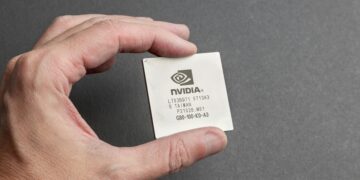CEO Erez Aminov on Breakthrough Drug Candidates, Strategic Acquisitions, and the Vision Behind MIRA’s Innovation-Driven Pipeline
MIRA Pharmaceuticals (NASDAQ: MIRA), a clinical-stage pharmaceutical company focused on developing novel therapeutics for neurologic, neuropsychiatric, and metabolic disorders, earlier announced new in vitro preclinical data generated by Eurofins supporting the therapeutic potential of SKNY-1, a next-generation oral drug candidate being developed by SKNY Pharmaceuticals, Inc. MIRA has signed a definitive agreement to acquire SKNY, and the proposed transaction remains subject to regulatory review and shareholder approval.
To learn more about the company’s innovation strategy, pipeline priorities, and long-term vision, we spoke with MIRA Pharmaceuticals CEO Erez Aminov in the following Q&A.
Stoxpo: How does the acquisition of SKNY Pharmaceuticals strategically align with MIRA’s existing pipeline and mission, and what are the projected synergies or value-adds for shareholders?
Erez Aminov: The SKNY acquisition brings a novel oral compound targeting obesity and nicotine addiction—two major public health challenges with significant commercial potential. SKNY-1 complements MIRA’s CNS pipeline with a differentiated mechanism designed to reduce cravings, support metabolic balance, and avoid the psychiatric side effects and muscle loss concerns associated with earlier treatments like CB1 blockers and GLP-1 injectables. The acquisition expands our therapeutic scope, adds diversity to our pipeline, and increases our addressable market. With both companies independently valued at approximately $30 million, the combined platform strengthens our ability to pursue long-term growth and potential non-dilutive funding opportunities.
Stoxpo: What are the key pharmacological differences between Ketamir-2 and traditional ketamine, and how do these distinctions potentially enhance safety and efficacy in treating neuropathic pain?
Erez Aminov: Ketamir-2 is a lower affinity, highly selective—it targets only one site on the NMDA receptor and avoids several other receptors and transporters that ketamine affects, including dopamine, opioid, and serotonin. These features are expected to significantly reduce the risk of side effects commonly associated with ketamine, like dissociation or agitation.
Ketamine is also a known substrate of P-glycoprotein (P-gp), a transporter that can limit drug absorption and penetration into the brain when taken orally. Ketamir-2 is not a P-gp substrate and has shown oral bioavailability and brain penetration following oral dosing in preclinical studies.
Despite its lower affinity and more targeted action, Ketamir-2 demonstrated robust activity in models of neuropathic pain, anxiety, and depression—without the hyperactive behaviors often seen with ketamine.
Stoxpo: With Ketamir-2 now published in Frontiers in Pharmacology, how does this peer-reviewed validation influence your regulatory strategy, clinical trial design, or potential partnership opportunities moving forward?
Erez Aminov: The publication provides peer-reviewed validation of Ketamir-2’s selectivity, oral bioavailability, and activity in models of neuropathic pain, anxiety, and depression. While it doesn’t replace regulatory feedback, the data help inform key aspects of clinical trial design, including dose selection, safety monitoring, and route of administration. For investors and potential partners, it signals scientific rigor and transparency and reinforces the rationale behind our development strategy. An additional manuscript has just been submitted, and others are currently in preparation.
Stoxpo: Can you elaborate on the proposed mechanism of action behind SKNY-1’s dual therapeutic potential for both weight loss and nicotine addiction?
Erez Aminov: SKNY-1 combines three key mechanisms to address both cravings and metabolism. First, it selectively blocks part of the CB1 receptor linked to compulsive behavior and appetite—while sparing the parts that affect mood—aiming to reduce cravings without triggering psychiatric side effects seen in earlier CB1 drugs.
Second, it potently activates the CB2 receptor, which is involved in inflammation and fat metabolism. This may support weight loss through improved metabolic function.
Third, SKNY-1 mildly inhibits the MAO-B enzyme, helping regulate dopamine levels tied to motivation and reward. Unlike older drugs, it does not inhibit MAO-A—an important distinction that may lower the risk of mood-related or serotonin-based side effects.
This combination is designed to help control cravings, reduce food and nicotine intake, and support better metabolic balance—all in a single, oral, non-stimulant therapy.
Stoxpo: Given SKNY-1’s targeted focus on appetite, addiction, and reward pathways, how does the compound compare to current FDA-approved treatments for obesity and smoking cessation in terms of efficacy and safety so far?
Erez Aminov: While still in preclinical development, SKNY-1 stands out for its particular profile and targeted, combined mechanisms. Unlike GLP-1 injectables, which are associated with gastrointestinal issues and observed loss of lean muscle mass, SKNY-1 is being developed to avoid these effects and support patient adherence.
For smoking cessation, existing treatments like nicotine replacement, bupropion, and formerly varenicline have shown effectiveness but can be limited by side effects. Based on our current in vitro data, SKNY-1 does not show meaningful activity at D1 and D2 dopamine receptors, supporting its potential for a favorable CNS safety profile.
Stoxpo: What are the next steps following the Eurofins in vitro data, and when do you anticipate initiating first-in-human clinical trials for SKNY-1, pending acquisition completion?
Erez Aminov: We’re completing a validated animal study focused on both weight loss, craving and nicotine addiction. This data will support the IND-enabling package for SKNY-1. Once the acquisition closes and the necessary regulatory steps are completed, we plan to move toward first-in-human clinical trials in the fourth quarter of 2026.
MIRA Pharmaceuticals Latest Announcement
You might like this article:Shake Shack Sizzles as Analysts Raise Price Targets on Growth and Leadership Optimism











